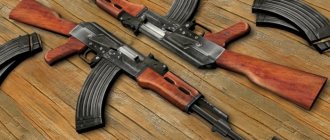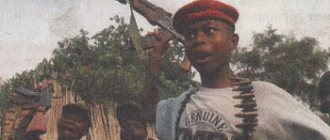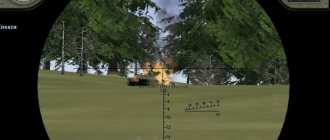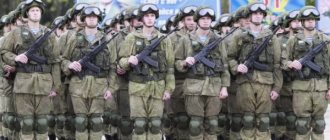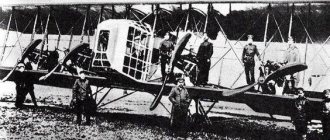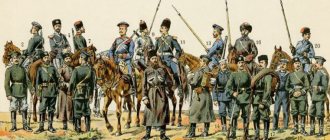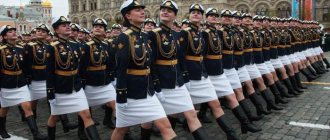Origin
Kurt Knispel is of Sudeten German origin. He was born in Czechoslovakia on September 20, 1921 in a small town called Salisov. Kurt spent most of his childhood in Mikulovice, where his father worked at a car factory. The future German tankman Kurt Knispel disliked working at the factory, so in April 1940, at the age of 20, he volunteered for the Wehrmacht.
Initial preparation for service in the Wehrmacht
Kurt received basic training in a reserve tank training battalion in the city of Sagan (today it is the Polish city of Zagan). There he was taught general military skills: proper marching, saluting, and the use of small arms such as the P38 submachine gun, Kar98k rifle, and hand grenades. After basic training, Knispel began training on Pz I, II and IV tanks. On October 1, Knispel was transferred to the 29th Tank Regiment of the 12th Panzer Division, where he completed his training and became a loader and gunner on the Pz IV tank. During his training, Knispel demonstrated his abilities as a gunner for the first time; he had the gift of three-dimensional vision, as well as unusually sharp reflexes. However, then he was left loading.
First combat experience
Knispel was at the front for the first time in August 1941. He served as a gunner for Lieutenant Hellmann on a Pz IV tank during Operation Barbarossa and participated in the invasion of the Soviet Union as part of the Third Panzer Group of the 57th Army Corps under the command of General Adolf-Friedrich Kuntzen. Kurt Knispel took part in hostilities from Yartsevo to Stalingrad, in the north in the Tikhvin region of the Leningrad region, as well as in the Caucasus under the command of Eberhard von Mackensen. In November 1942, a photographer captured Corporal Knispel wearing the badge “For a Tank Attack,” the Iron Cross of the Second Class, and the badge “For Wounding.”
Kurt Knispel: duty stations and critical operations
In January 1942, already having 12 tank victories to his name, Knispel returned to Putlos for training on the new Tiger tank. From Putlos his group was sent to the 500th Tank Battalion in Paderborn. This group, led by Hauptmann Hans Fendesak, became part of the first company of the 503rd Heavy Tank Battalion, which fought in Kursk as flank cover for the 7th Panzer Division. Subsequently, Knispel participated in the operation to break through the Korsun-Cherkassy pocket, as well as in battles near Vinnitsa, Yampol and Kamenets-Podolsky. His company was then transferred from the Eastern Front and equipped with the latest Tiger II heavy tanks. After this, Knispel fought in France near the city of Caen, and also covered the retreat of German troops from Normandy. After returning to the Eastern Front, his crew fought near Mesotur, Kecskemet, Cegled, Bab Castle, Laa and many other places (in one battle, Knispel is reported to have knocked out 24 enemy tanks in his Tiger II). Knispel's last battle took place near the village of Vlasatice in the Czech Republic, where he, along with another tank commander, Sergeant Major Skoda, was mortally wounded on April 28, 1945, ten days before the end of the war.
Start of the war
Here it is worth remembering his character, which began to interfere with his career even before it began. While on his way to the Eastern Front, he saw the warden's cruel treatment of a prisoner, demanded that it stop, and when the warden did not listen, he threatened him with a pistol, knocking the rifle out of his hands.
This prank did not go unnoticed, and already at the next station he could have started having problems with the gendarmes if it had not been for the company commander who intervened.
On June 22, 1941, the well-known Operation Barbarossa began, and Kurt Knispel served as a loader on the PzKpfw IV under the command of non-commissioned officer Hellmann. He found himself in the gunner's place in August, when the previous gunner was wounded.
Near Leningrad, Kurt Knispel got his first trophy - a Soviet T-34.
The capture of Solnechnogorsk and Klin on November 25 were the last successes of the German army in 1941. Resistance grew and a harsh winter set in.
Kurt went through severe frosts, received the Iron Cross 2nd class, and in January 1942 began serving in the crew of Sergeant Major Rubell, who became very pleased with the new gunner and later recalled that Knispel made decisions phenomenally quickly and shot just as accurately.
During this time, the official count of destroyed enemy tanks reached 12.
Attitude towards awards and honors
Kurt Knispel, whose biography and achievements rightfully make him the best tanker of the Second World War, was a rather modest and non-conflict person in life. As commander of the Tiger and Tiger II tanks, Knispel scored a further 42 victories. But he didn’t really boast about it, and when a controversial situation arose, when someone laid claim to a damaged enemy tank, Knispel usually gave in, always ready to give his success to someone else.
He was nominated for the Knight's Cross four times but never received the award, which was common to most other German tank aces of World War II. This did not bother Knispel at all, since vanity was not the main driving force for him. Knispel has one hundred and sixty-eight confirmed destroyed tanks, and with unconfirmed cases their number reaches one hundred and ninety-five. Even if we take into account only the first figure, Kurt Knispel is the most successful tank shooter of the Second World War.
End of life, results and achievements
There was a week left until the end of the war when an exceptional tanker died. It was on the border of Austria and the Czech Republic. Historians have differing opinions about the last battle, but most eyewitnesses claim that Knispel died from a wound in the battle in which he knocked out his last tank. Unlike other tank commanders, who were not at gunpoint, he won most of his victories personally.
Kurt Knispel's biography never mentions his personal life. Either he never married, having spent his entire youth in the war, or there is no information about this. He was raised by a family of Sudeten Germans, the professions of his parents are unknown.
Military merits
One day, Knispel, in a completely incredible way, knocked out a Soviet T-34 tank from a distance of 3000 meters. After the first fifteen victories, he was awarded the Iron Cross, First Class, and then the gold badge "For Tank Attack". After the 126th victory, Knispel received the German Cross in gold and became the only German non-commissioned officer whose name was mentioned in the official Wehrmacht communique. They say that he gave others many victories that he could rightfully consider his own. Kurt Knispel usually avoided any controversy and gained a reputation for being an affable and open person. As a tank commander, he felt like a duck to water, sometimes even single-handedly confronting superior enemy forces in order to give his unit more opportunities to successfully advance or retreat. Alfred Rubbel, one of Knispel's first commanders, argued that Kurt never abandoned his comrades even in the most difficult situations.
Lack of respect for superior commanders is the main reason that Kurt Knispel moved up the ranks so slowly. Once he attacked an officer who was beating a Soviet prisoner of war. Knispel’s appearance did not correspond to the stereotypical image of a German soldier: he had a tattoo on his neck, a small beard and longer hair than required by regulations. However, his fellow soldiers loved him very much, and he had no equal in skill. At the age of 23, Knispel had more tank victories to his name than such famous aces as Michael Wittmann, Ernst Barkmann, Johannes Bolter or Otto Carius.
The mystery of K. Knispel's last battle.
Compilation of two materials.
Kurt Knispel is the most successful tank ace of World War II with 168 enemy tanks destroyed (all on the Eastern Front).
was born on September 20, 1921 in the small village of Salisfeld (Sudetenland), at that time these lands belonged to Czechoslovakia. Kurt's ancestors lived and worked here since the time of the German emperors; he was an ethnic German with a Czechoslovakian passport. According to the Munich Treaty (author's note), the Sudetenland went to Germany without a single shot, although, to tell the truth, the population living here was ready for a military invasion, ethnic Germans assisted people from the Abwehr and the Wehrmacht in every possible way. At that time, Kurt was only 17 years old, and he had little interest in politics, he was, like many of us at his age, a crazy guy. The guy was famous for his violent character and willful disposition, for which representatives of the law did not like him and local girls adored him. The guy was short, about 160 centimeters, and quite wiry.
Despite Kurt's indifference to the conflict flaring up in the world, as a result of the annexation of the Sudetenland, he became a full citizen of the Third Reich with all the ensuing consequences. His duty was to join the German army. The young man did not hide or run away from his duty, as he considered military service to be his duty. On May 15, 1940, Kurt was enlisted in the 4th company of the 15th reserve tank battalion based in the town of Zagan, until September 20, he was trained on the main types of Wehrmacht armored vehicles: from Pz.I to Pz.III, and already on October 1 he was enlisted in the 3rd company of the 29th tank regiment, receiving the qualifications of a gunner and loader on Pz.IV. The training was behind us, and everyday combat was ahead.
Knispel’s character can also be judged by the many adventures that his comrades had to experience with him. For example, on his way to the Eastern Front by rail while waiting at a station near Krakow, he witnessed the scene of a local concentration camp guard leading an escaped prisoner and hitting him with the butt of his rifle along the way. Knispel jumped up to him and demanded that he stop, but the warden called him an overgrown robber and waved him off. Knispel pulled out a pistol, snatched the rifle from the warden’s hands and smashed it on the rails, and kicked the warden away. At the next station, field gendarmes were already waiting for Knispel, and only the company commander saved him from arrest.
By the start of Operation Barbarossa on June 22, 1941, Kurt was a loader as part of the Pz.IV crew of non-commissioned officer Hellman. The crew successfully went through two months of fighting on the Eastern Front, when at the end of August the gunner was wounded, Knispel was appointed in his place, in a new position in the Leningrad region, he would destroy his first tank - it would be the T-34. By January 1942, Kurt changed his crew, coming under the leadership of Sergeant Major Rubell, who later recalled: “Knispel’s attention never waned. Day or night, he controlled the entire battlefield within sight. Even before I gave the order, Knispel was already shooting and destroying the enemy with one armor-piercing shell. Kurt instantly assessed the situation and reacted very quickly. I've never met anyone else with such a combination of confident reactions and absolute precision. He was unique!” Until mid-May 1942, Kurt, together with his 12th Tank Division, was in the Leningrad region, operating in the Mgi and Tikhvin areas; after fierce fighting in this direction, the unit was sent to Germany for replenishment and reorganization. After a short stay at home, he returned to the Eastern Front as part of the 4th Tank Regiment of the 13th Tank Division, which was operationally subordinate to the 1st Tank Army, leading the offensive in the Caucasus as part of Operation Edelweiss. After long grueling battles in this direction, by the winter of 1943, German troops rolled back to Ukraine under the onslaught of the Red Army, completely failing the command’s plan to control oil fields in the Caucasus.
In the meantime, Kurt’s personal account increased slightly, and the tanker himself received leave, followed by retraining on the Pz.VI “Tiger” heavy tanks. Having tested new combat vehicles, the crews of the 9th company of the 4th tank regiment were sent to the 1st company of the 503rd heavy tank battalion for further participation in Operation Citadel. The training was not in vain; Alfred Rubell later recalled: “My friend Kurt Knispel proved that he has not only a keen eye, but also, most importantly, outstanding three-dimensional vision. Later, this allowed him to win many victories in hundreds of fights.” During fierce battles in July-September 1943, the following episode occurred with Knispel’s company; three Tigers, including Kurt's tank, were assigned to the infantry, which was withdrawing in good order, as tank cover. In addition to the infantry, a huge number of Russian civilians left, driving large herds of cattle. The tanks slowly crawled behind, closing the retreat. In the evening we stopped near the village of Osevets. It got dark quickly. The growing hum of diesel engines of the approaching T-34s was heard. The Tiger crews developed special tactics for night combat. While the gunners roughly aimed their guns at the sound, the tank commanders launched flares. In their light, Kurt immediately noticed the T-34. He took aim and fired. His friend Rubbel's Tiger fired a split second later. Two T-34s burst into flames. A second later, a group of 12 T-34s opened fire. As they approached, their silhouettes became visible in the light of the burning tanks. Then 8 more T-34s were destroyed, the rest retreated. During the fierce battles on the Kursk Bulge, the “keen eye” was able to knock out another 27 tanks. In the battle on the Kursk Bulge, another episode happened to our hero, after which he almost ended up in court. During the offensive, the company's tanks rolled out onto flat terrain, pursuing the retreating Soviet troops; the gunner's visibility was excellent. Kurt's car was one of the first at the firing line, but noticing civilians on the armor of Soviet tanks, he climbed out of the turret and lit a cigarette. At that moment, an SS officer jumped up to the tank, demanding to open fire on the retreating enemy. A short altercation ensued; the SS man had already managed to grab his pistol, but Knispel knocked him to the ground with a couple of blows. The battalion commander saved him from the field trial. In the period from the autumn of 1943 to the spring of 1944, the 503rd battalion took part in bloody battles on the territory of Ukraine, during which time Kurt already had 101 tanks as part of various crews, and on the chest of the young tanker were Iron Crosses of two degrees and a Golden German Cross. It is he who flashes in the footage of the famous German newsreels, the commander of the “Royal Tiger”, whose award is covered by an eagle with a swastika on his jacket, which was, to put it mildly, unacceptable.
On May 9, 1944, the battalion was sent to Germany to the Ordurf training camp for rest and replenishment, and new Pz.VI “Royal Tiger” tanks were immediately received. On June 26, the battalion was sent to Normandy to repel the Allied troops; by the end of August, the battalion was deprived of all combat capability, having lost all its tanks; the remaining combat-ready personnel were sent by train to Germany. A month later, having received new “Royal Tigers”, the battalion was transferred to Hungary to stop the tank armadas of the Red Army. With the rank of tank commander, Kurt was at the forefront of tank attacks and rearguard battles along with his unit. “Knispel’s luck, which never left him, accompanied him in the battles between the Tissa and Danube rivers. It seemed a miracle to everyone that, being always in the thick of battles, he was never wounded. Under the command of Captain Fromme, on October 21, the 1st company of the 503rd battalion fought heavy street fighting in Mesetur. Knispel destroyed three anti-tank guns and one T-34. On October 22, the battalion attacked in the Terekzhent-miklos area. The 3rd company came first, with five tanks. Behind her is the 1st company. During this battle, Lieutenant Führbringer's tank broke through Russian anti-tank positions, was fired on from all sides, but nevertheless returned with his battered tank, having received 24 hits. At the end of October the battalion was located in Szeged. From November 1, he took part in the battles between Szeged and Kecskemét. On this day, the battalion first dealt with the new Soviet IS-2 tanks with a 122 mm gun. Several of them were destroyed by the Royal Tigers. In the following days and weeks, Sergeant Major Knispel increased his tally of destroyed tanks. In some cases, he achieved success from a maximum distance of 3000 meters. Everyone expected that his official list of victories would soon reach 200.”
The year was 1945, the German army was constantly retreating under the attacks of the Red Army and Allied troops. Part of Knispel retreated in battle through the territory of southern Moravia. On April 28, units of the 503rd battalion entered into combat near the village of Vlasatice, where Kurt destroyed his 168th tank, which turned out to be the last of his career. During the battle, Knispel’s car was damaged and immobilized by the fire of Soviet self-propelled guns; Knispel’s friend, sergeant major Skoda, came to his aid. Trying to climb out of the hatch of his King Tiger, Skoda was killed by a Russian sniper. Knispel climbed into the serviceable tank of his deceased friend, but as a result of a short battle with reinforcements of Soviet tanks that arrived in time, this vehicle was also disabled. Having dismounted, the tankers began to retreat to a new line of defense; during the retreat, the group came under mortar fire, Kurt Knispel was wounded by shrapnel in the head and torso, but was able to move with difficulty. The seriously wounded tank ace was transported to the nearest field hospital, located in the building of the municipal school in the town of Vrbovce, where he died in the evening of the same day. Together with other soldiers and officers, he was buried behind the wall of the village cemetery, where a small burial site was organized. After some time, fierce local residents razed the German cemetery to the ground. Years passed, this place was overgrown with grass and nothing else here reminded of the burial, and the archives containing the last records about it were consigned to oblivion. Kurt and other fighters would have remained in obscurity if not for the efforts of many people of different nationalities, including Germans, Czechs and Russians. On April 9, 2013, a complete exhumation of the remains located at this military burial site was carried out. After additional examinations, the identity of the German tank ace was finally confirmed. All remains were transferred to the German side for reburial on their native soil.
Kurt Knispel's dog tag, found on the body of a tank ace, the badge's padding is his first unit.
From the memoirs of friends in arms, it is known that Knispel despised the Nazis and perceived military service as a necessity that had to be endured, and therefore he served as well as he could. At the front, he was known primarily for the fact that he wore long hair and a beard, not according to regulations. For his military merits, he was nominated for the Knight's Cross four times (!), but each time he managed to commit some disciplinary offense, after which the award was refused. The episodes of Kurt’s “recklessness” that I listed are not isolated, this is the kind of person he was, standing up for prisoners, beating presumptuous “soldiers”, stealing alcohol from an SS warehouse... but at the same time sacredly honoring the unwritten soldier’s (author’s note: knightly) code.
Your humble servant has repeatedly had conversations with veterans of the Second World War who fought on both sides. And every conversation I had boiled down to the fact that these people who had gone through real hell on earth, who had lost their loved ones and friends, their homes, their land, told me one thing, that they do not consider each other enemies and that the most terrible thing in a person’s life is war. The hero I told you about today was the same as many of us, he was against the war, but followed the call of his duty - to be a real soldier.
Thank you
From another source.
I tried to identify the Soviet military units that, at the end of April 1945, advanced towards the Czech city of Znojmo and fought on the front between the settlements of Stronsdorf in Austria and Vlasatice in the Czech Republic.
As for publicly available information about K. Knispel’s last fight, there is very little of it and it is contradictory. The German publicist Franz Kurowski wrote about K. Knispel in his book “Tank Aces,” which was recently translated into Russian. In this book, he adhered to the version of Hauptmann Diest-Korber, the last commander of the 503rd heavy tank battalion "Feldgernhalle" (sPzAbt.503 "Feldhernhalle"). According to this version, K. Knispel died in a battle with Soviet tanks (and/or self-propelled guns) on April 28, 1945 near the village of Vlasatice on the territory of the modern Czech Republic.
BUT! — Vlasatice was occupied by the Soviet army on April 25-26, 1945, after the capture of Hodonin, Brzeclav, Mikulov as a result of the Bratislava-Brnov offensive operation. Vlasatice is located 5 km from Mikulov. There were no heavy battles in Vlasatitsa, and there were no military hospitals either!
The Austrian historian Franz Jordan, in his book “Fighting in Lower Austria in 1945,” adheres to the version of Horst Bechtel and Alfred Rubbel, veterans of the 503rd Feldgernhalle heavy tank battalion. According to this version, K. Knispel was seriously wounded in a battle with Soviet tanks (and/or self-propelled guns) on April 29, 1945 near the village of Stronsdorf on the territory of modern Austria. units and subunits of the German tank corps operated in the area of the settlements Patzenthal - Patzmannsdorf - Stronsdorf - Stronegg - Unterschoderlee - Oberschoderlee - Unterstinkenbrunn - Gaubitsch – Kleinbaumgarten – Altenmarkt – Ungerndorf – Fallbach – Ungerhof. Presumably, on April 29, 1945, K. Knispel's tank was knocked out at Stronsdorf in a battle with tanks/self-propelled guns of the Soviet 23rd Tank Corps.
Royal Tiger or PzKpfw VI Ausf. B Tiger II, this is exactly what the German tank ace fought his last battle on:
Royal Tiger (PzKpfw VI Ausf. B Tiger II) destroyed in the battles near Znojmo
And Knispel himself was seriously wounded and taken to a hospital in Vrbovec/Urbau (Czech Republic). The only known place of burial of K. Knispel is the village of Vrbovec/Urbau, in which at the end of April 1945 there was an infirmary. This village was located behind the front line in the German rear (20 kilometers from Stronsdorf and 37 kilometers from Vlasatice). On April 28, 1945, the front line ran along the Dyje River, between Hranice (Czech Republic) and Laa der Thaya. The bridges were blown up, one bank of the river was steep. and the other is swampy and fortified with bunkers from 1938. And this does not allow for a direct attack across the river. By the way, the attack on Laa was carried out along the river, from Vienna.
Vrbovec is located 6 km from Znojmo, 5 km from the Dyje River and 24 km from Laa, where the main battles took place. Znojmo was captured on May 8, 1945, as a result of the withdrawal of German troops to surrender to the Americans.
All of the above confirms the death of Kurt Knispel in Vrbovec, and not in Vlasatica!
He died at the age of 23!
But it is still unknown where his tank was hit and it is unknown exactly where his last battle took place.
It is only known that in those days the German troops suffered almost no losses. And compare the losses of both sides.
Summary of losses for April 27-29, 1945, in the battles of Laa der Thaya:
German troops: Equipment losses: 2 self-propelled guns destroyed, several tanks knocked out and sent for repairs. Casualties in manpower: 1 officer was killed, 4 people died in hospital from wounds (including Kurt Knispel), several soldiers were slightly wounded.
Soviet troops: Losses in equipment: 19 T-34 tanks and 3 self-propelled guns were destroyed, 2 T-34 tanks were captured by the Germans. Manpower losses: 25 people were killed in battle, the number of wounded is unknown.
Here is a diagram of the battles drawn by participants and eyewitnesses
Thank you
- Comments (4)
Comments
Quatro 2018-03-29 05:59 On the recently raised topic of professionalism and dedication, but not sacrifice of the Germans.
The clearest example. He died not in a furious, reckless ram, for example, but in a battle with superior forces, having sold his life dearly. And his friend, the no less heroic Alfred Rubbel, thanks, among other things. the highest degree of skill, remained alive to write memoirs (as I wrote in that topic about such people), to educate the younger generation, and his experience and the famous battle at Mitterhof on April 21, 1945, in which he and the remnants of the battalion destroyed 41 tanks, studied including in Sunderhurst, in contrast to the complete rejection and lack of interest in the tank tactical experience of the Germans among those whom they constantly and completely beat with their numerical minority, such a different approach to the heritage and experience of war among the Allies. https://www.litmir.me/br/?b=566619&p=1 barabas 2018-03-29 07:43 For reburial in native land? So, he was born in the Czech Republic.
Quatro 2018-03-29 07:46 Volksdeutsche same.
+1 High-Jack 2018-03-29 08:21 A worthy opponent.
Update list of comments RSS feed of comments for this entry
Comments can be posted only by registered users.
JComments
Burial place of the German ace
The remains of the legendary tanker were found by Czech archaeologists on April 9, 2013 in an unmarked grave behind a church in the village of Vrbovci, not far from the Czech-Austrian border. Moravian Museum spokeswoman Eva Pankova explains that he was identified by a tattoo on his neck. On 10 April 2013, Czech authorities confirmed that Knispel's remains were found among the bodies of fifteen other German soldiers behind a church wall in Vrbovci. In all likelihood, Kurt Knispel will be reburied in the military cemetery in Brno.
K. Knispel is as legendary a hero among tank crews as the Red Baron is among pilots.
End of the war
On May 9, 1944, he went to training camp Ordurf, where he received a Tiger 2, became a commander and, on June 26, headed to Normandy.
By this time, Germany's successes were getting worse, in particular, Kurt Knispel's battalion was completely defeated at the end of August and its remnants ingloriously went to Germany for reorganization.
A month later, the famous gunner, who had already become a commander, fought at the forefront of the front in Hungary, trying to stop a huge number of Soviet tanks. Here his Royal Tiger managed to survive 24 hits in 1 battle.
On November 1, Kurt Knispel encountered the new heavy Soviet IS-2 tanks, which had a devastating 122 mm gun, but they were unable to stop the constant increase in the number of destroyed enemies.
On April 28, 1945, Kurt's luck ran out after he knocked out tank 168 near Wostitz, aka Vlasatice.
A Soviet self-propelled gun hit Knispel's tank and severely damaged the chassis. Sergeant Major Skoda's Tiger-2 tried to help, but Skoda himself, leaning out of the hatch, was quickly killed by a sniper.
Knispel managed to get into this tank, but soon it too was hit. The crew of the Royal Tiger decided to abandon it and retreat on foot, as a result of which they came under mortar fire, where Kurt was seriously wounded in the head and body by several shrapnel, however, he managed to move.
In the evening, Kurt Knispel died in hospital at the age of 23, having lived only 10 days before the end of the war.
He was buried with the rest of the dead in the German cemetery, located next to the village one.
Later, local residents destroyed this cemetery, leaving no traces or reminders of the dead people there.
Knispel remained only in the memory of friends and archives, but on April 9, 2013, enthusiasts established the burial site and found the remains of Kurt, after which they handed them over to Germany for burial with honors and on their native soil.
This is where the biography comes to an end and it is worth summing up some conclusions.
Awards
- Iron Cross (2nd class).
- Iron Cross 1st class for combat operations on the Kursk Bulge in July 1943. During this battle he destroyed 27 T-34 tanks in 12 days.
- Medal "For the Winter Campaign in the East." This award is sometimes called the Order of the Frozen Meat.
- Badge “For Wounding” (Silver).
- Badge "For a tank attack" (Silver).
- Breastplate "For a tank attack" of the first degree for 100 battles.
- German cross in gold May 20, 1944.
- Knispel is the only non-commissioned officer of the German army who was mentioned in the so-called Wehrmachtbericht (daily report of the Wehrmacht High Command) dated April 25, 1944. The reason was the destruction of 101 enemy tanks.



